RARE! WWII June 26th, 1945 "The New Okinawan" U.S. Soldier Produced Battlefield-Printed U.S. Military Combat Press Newspaper
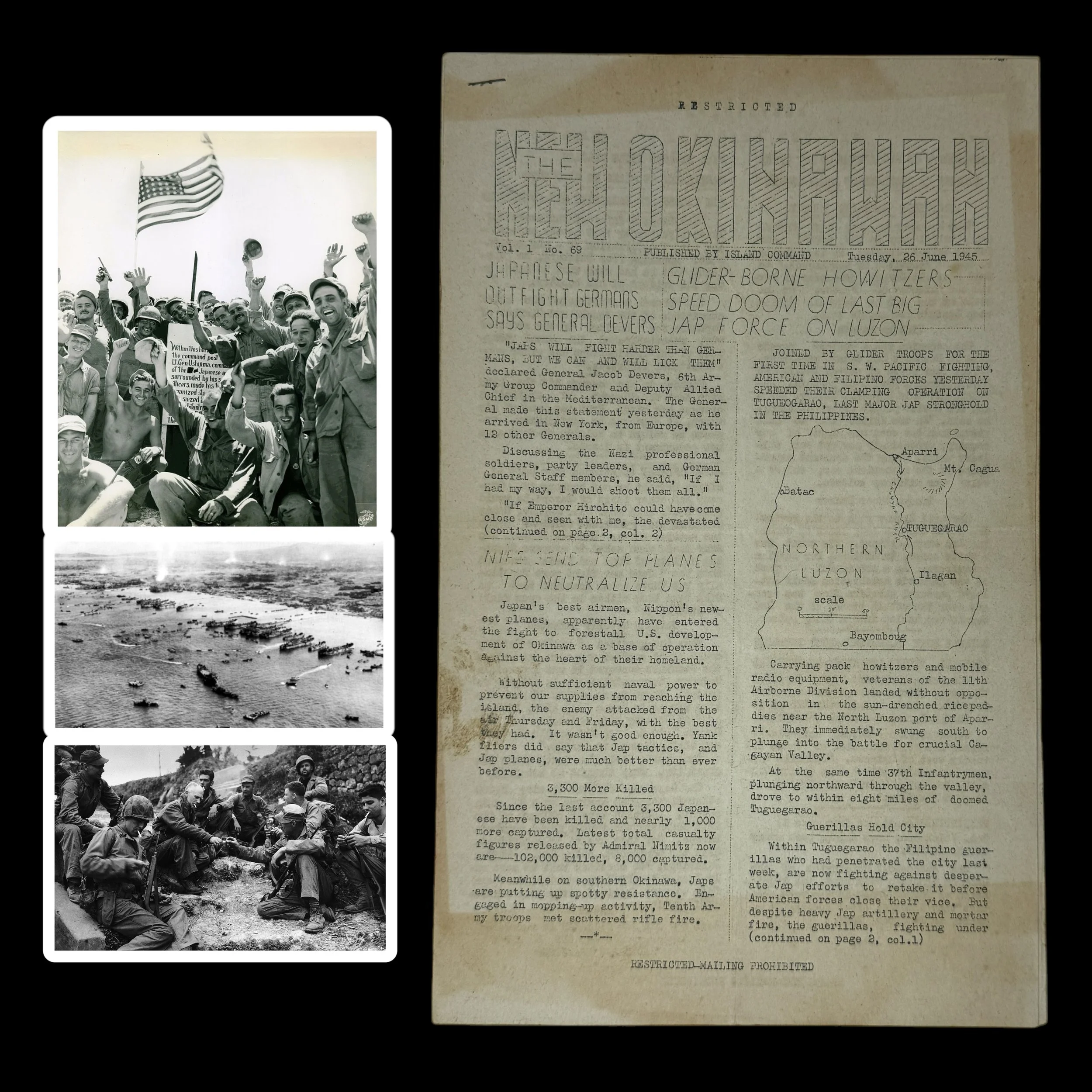
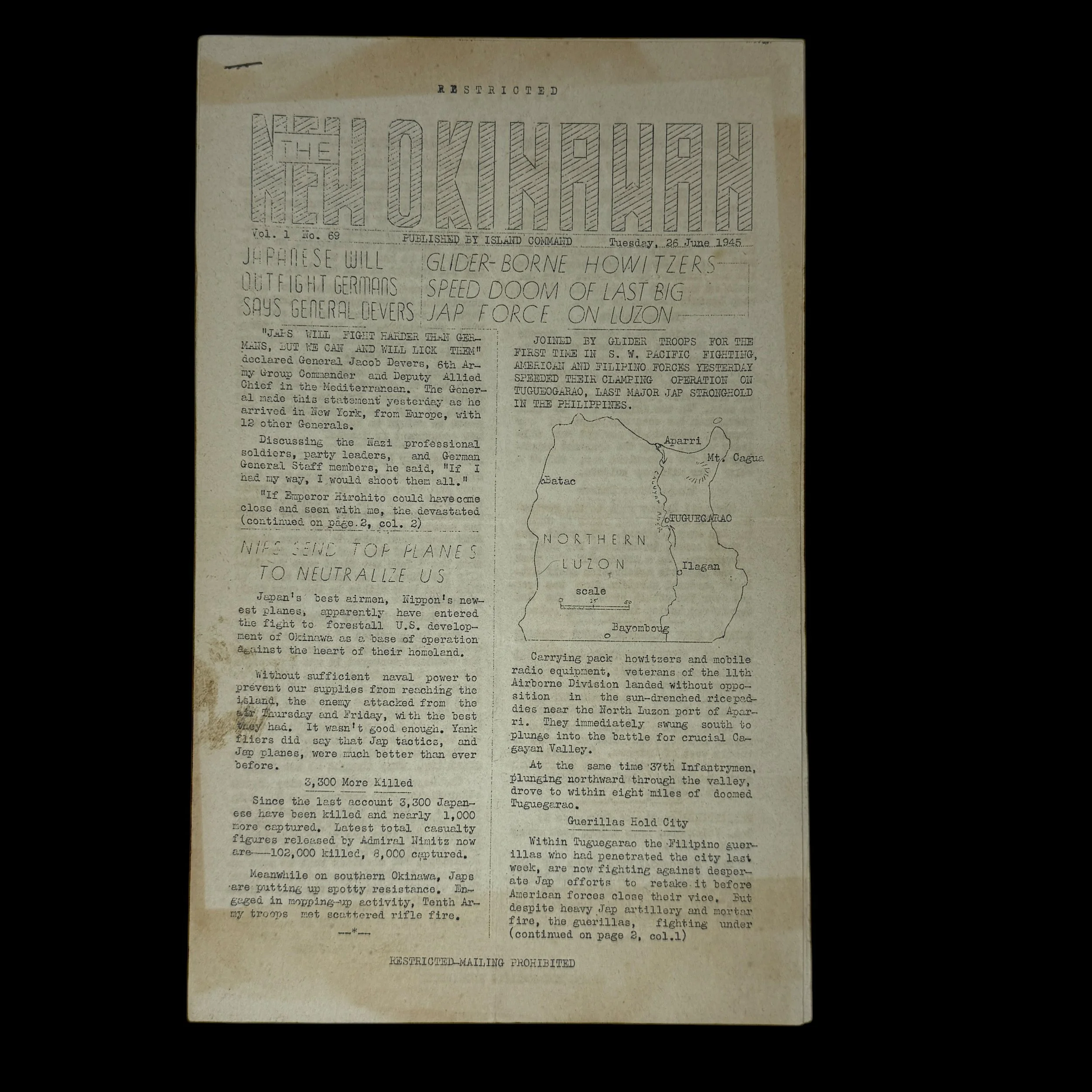
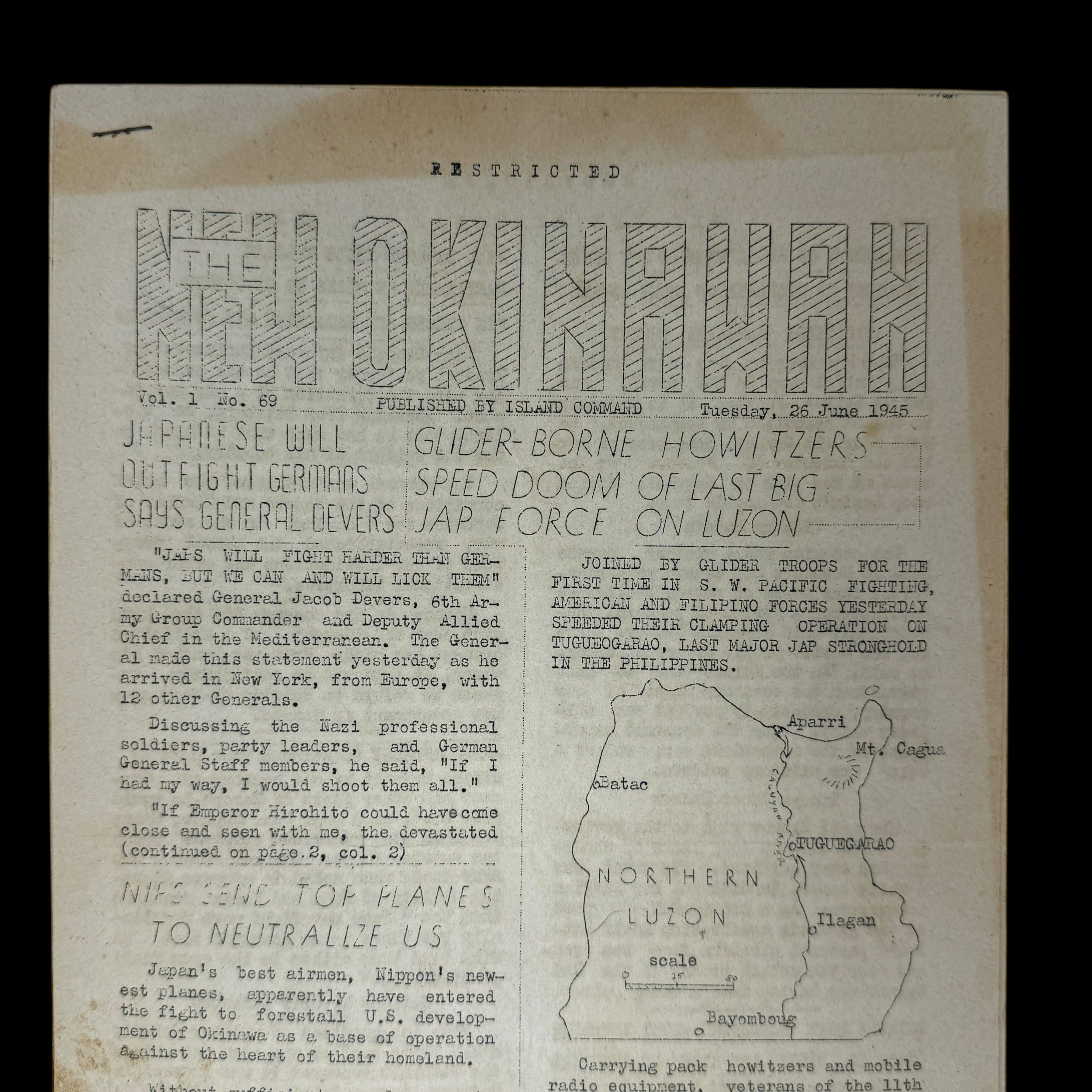
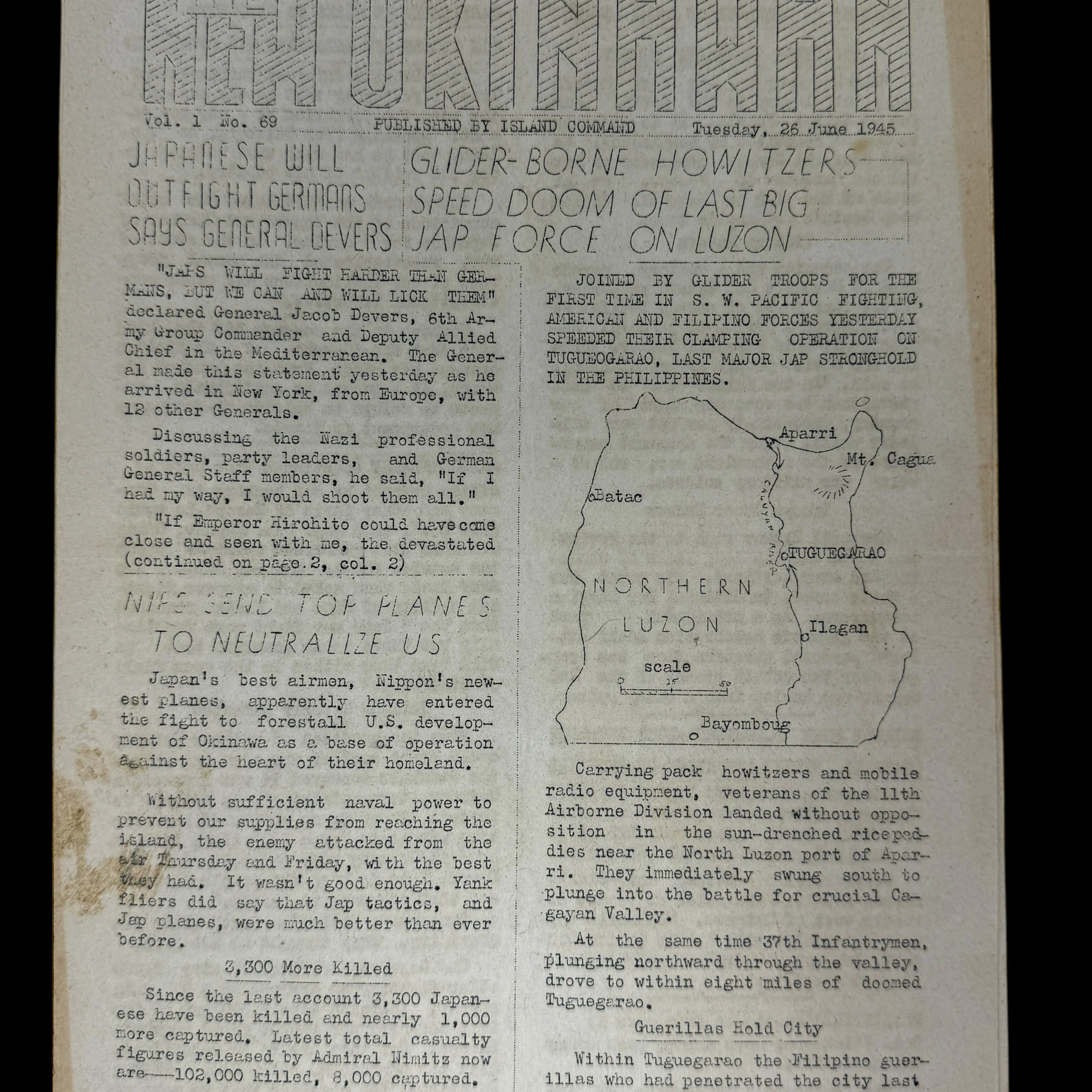

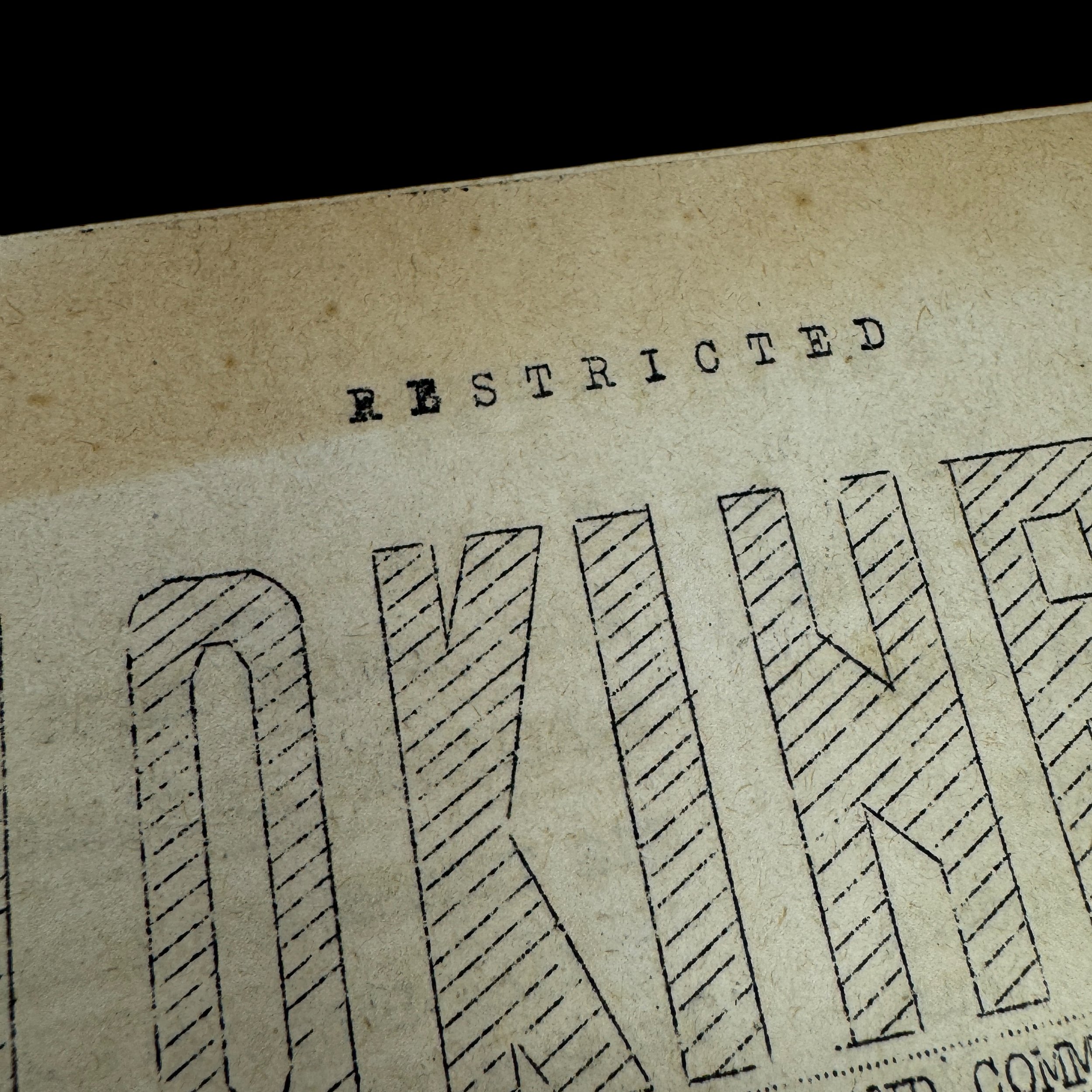
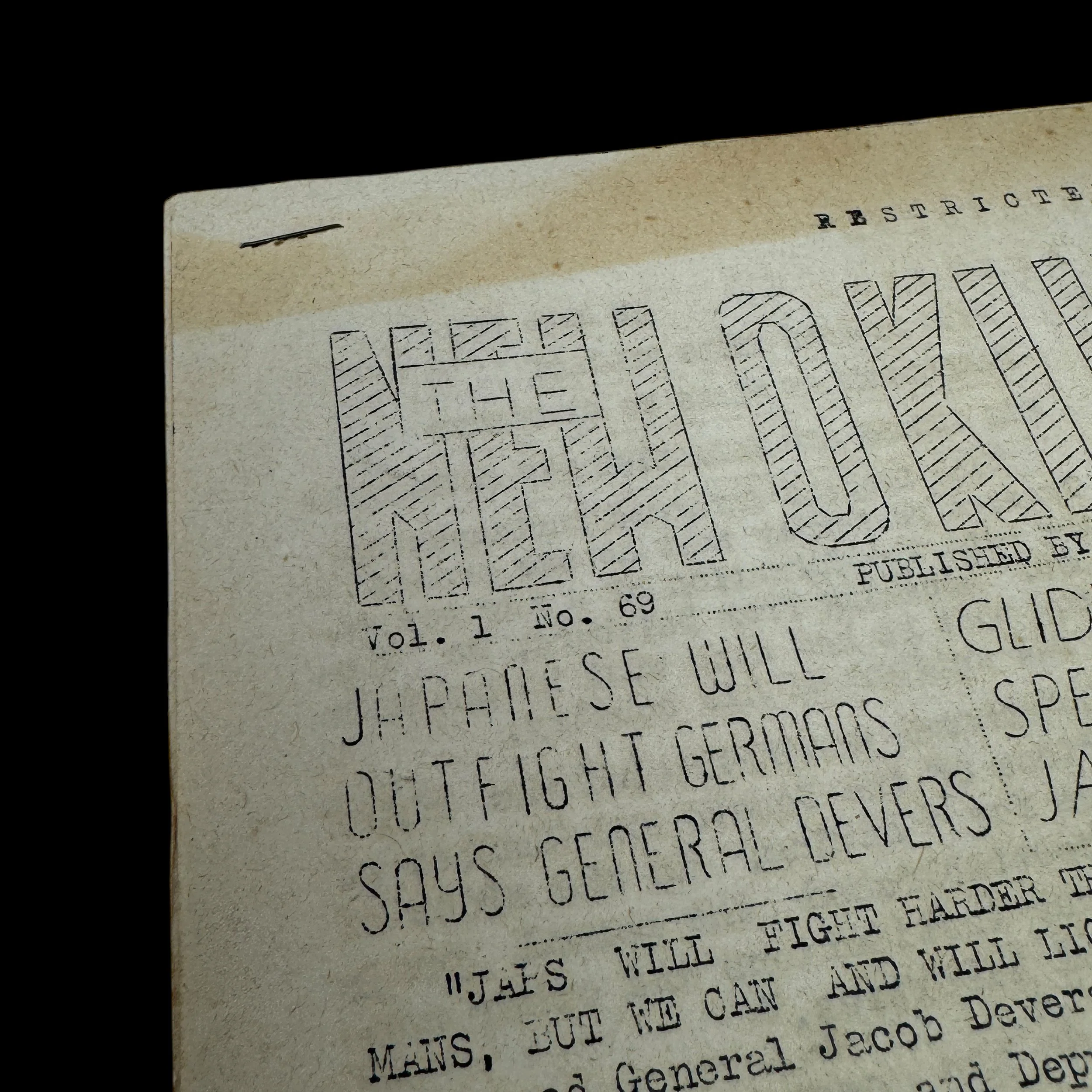


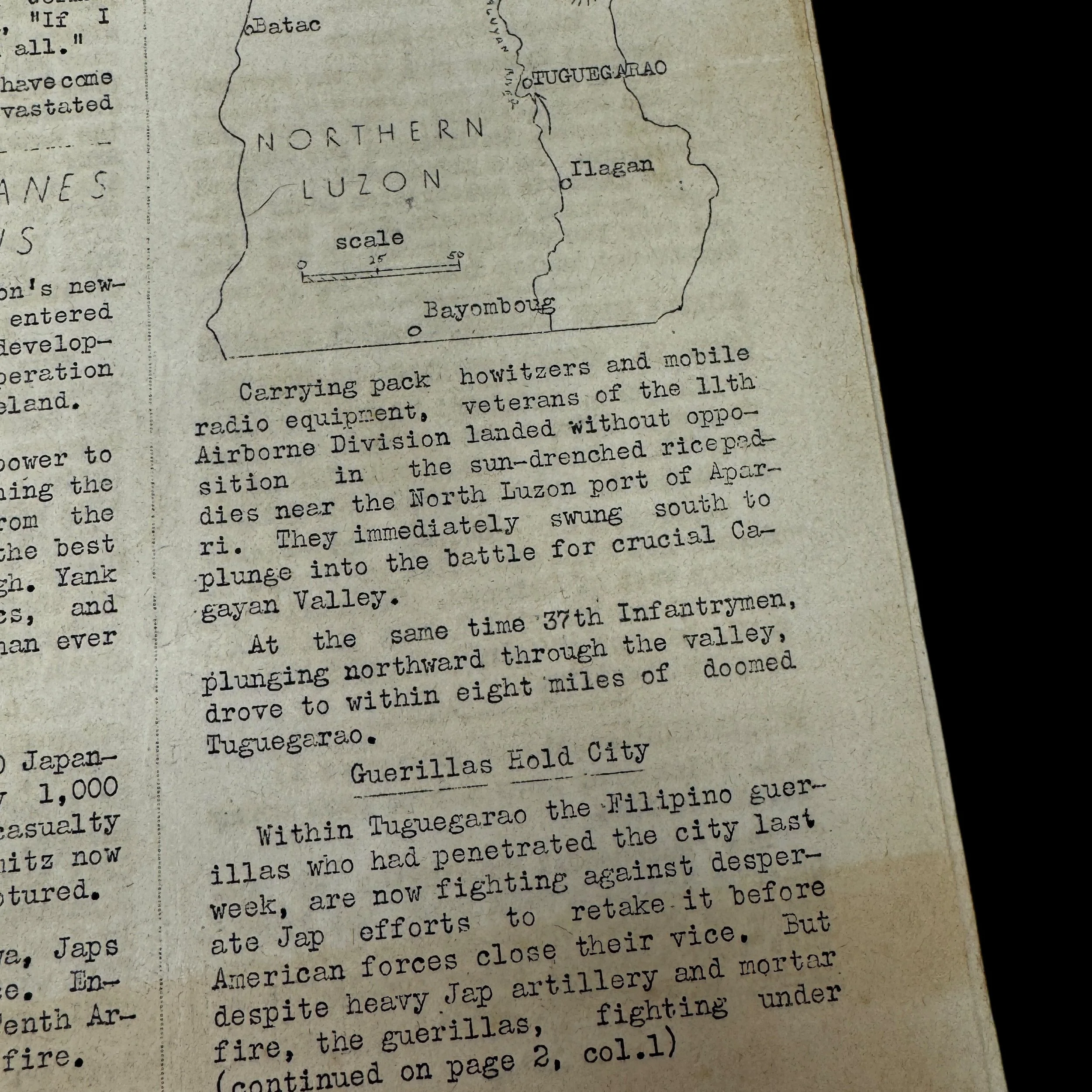

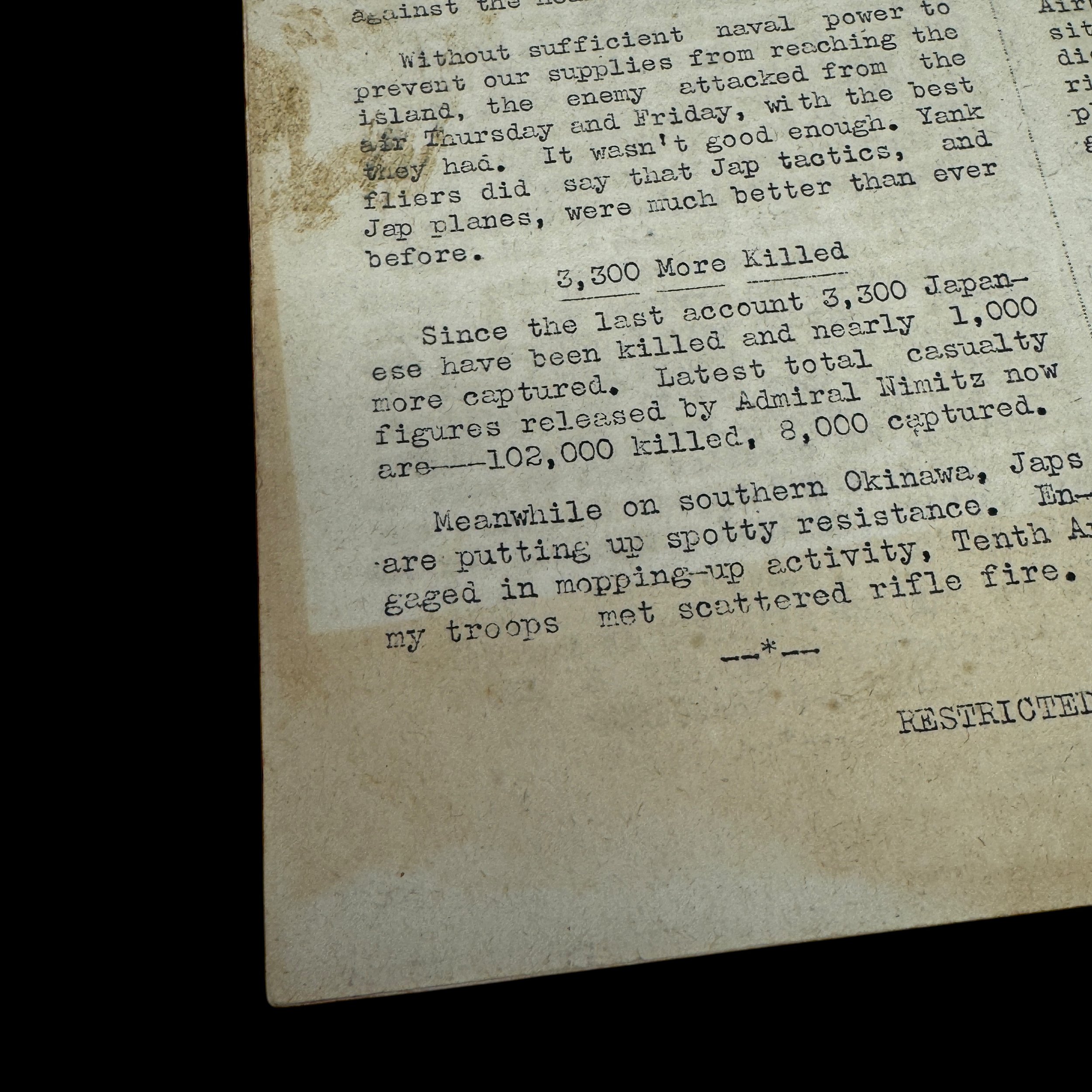


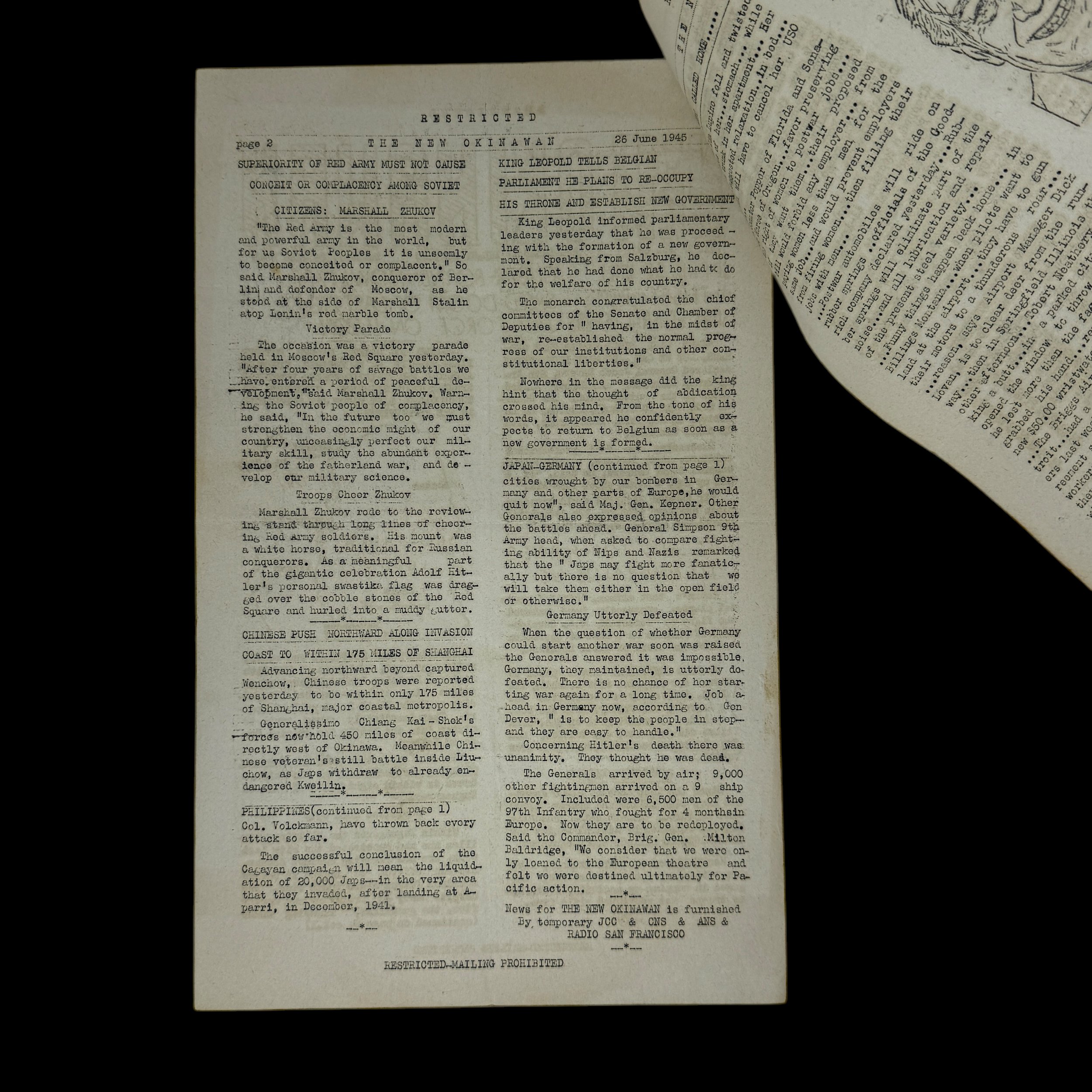
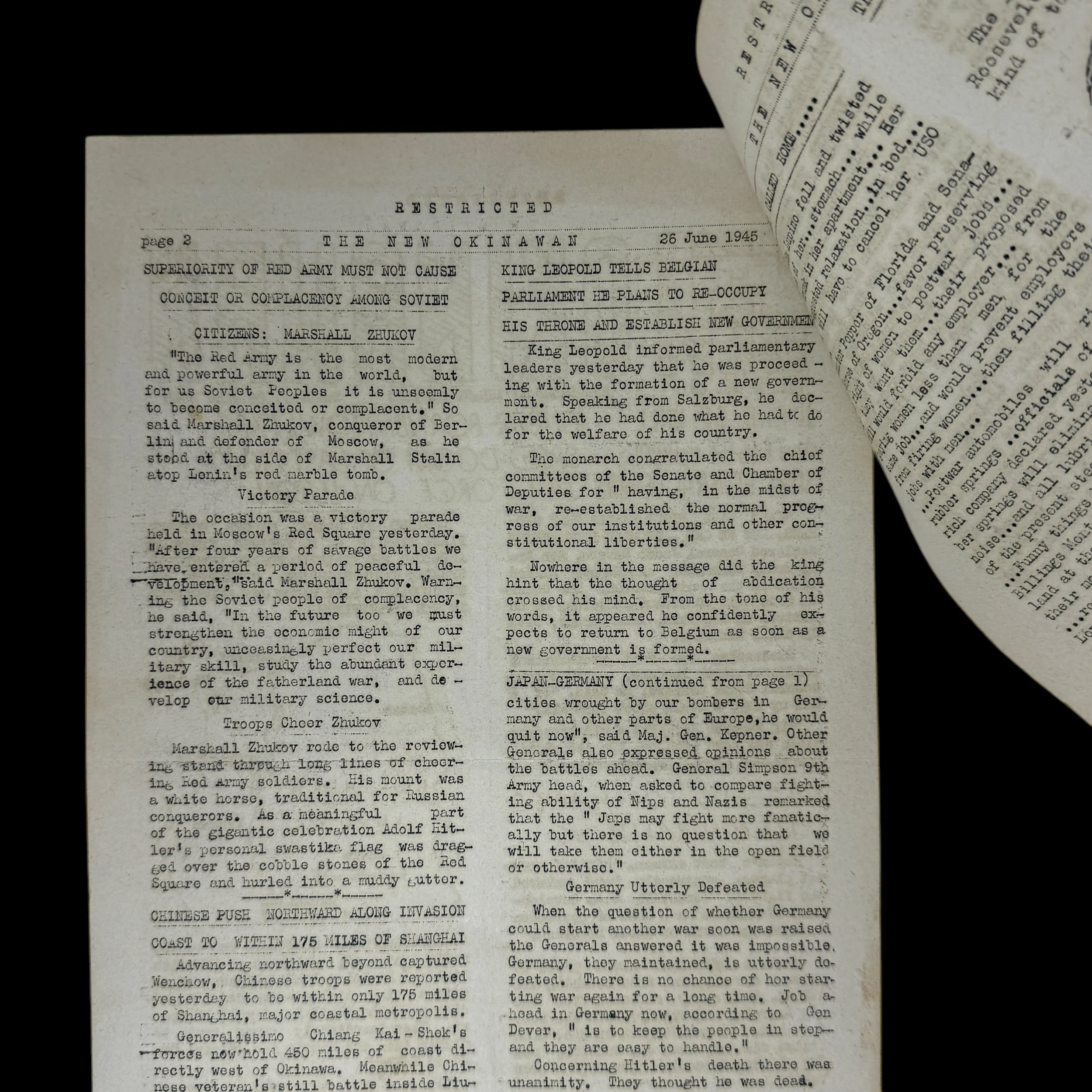



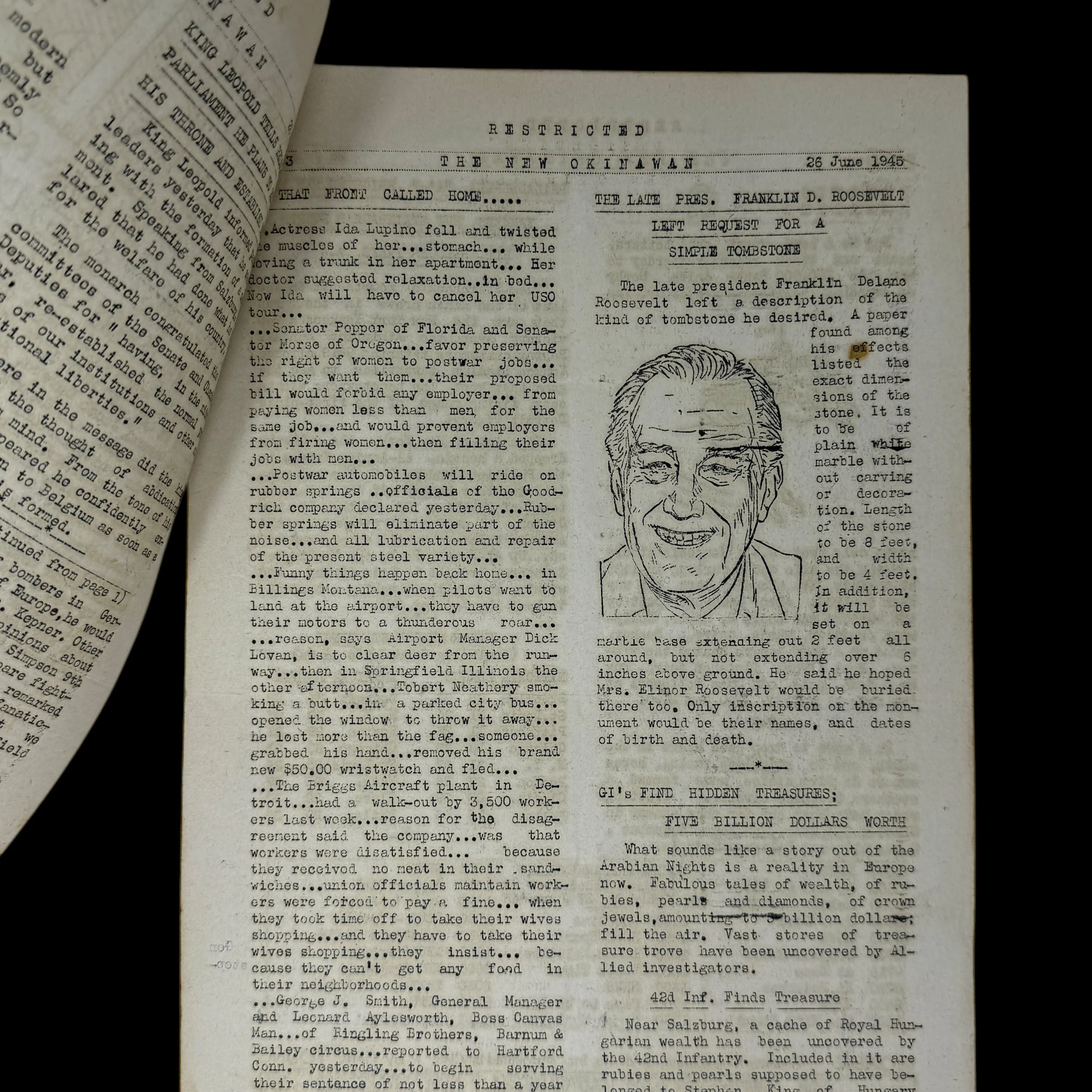
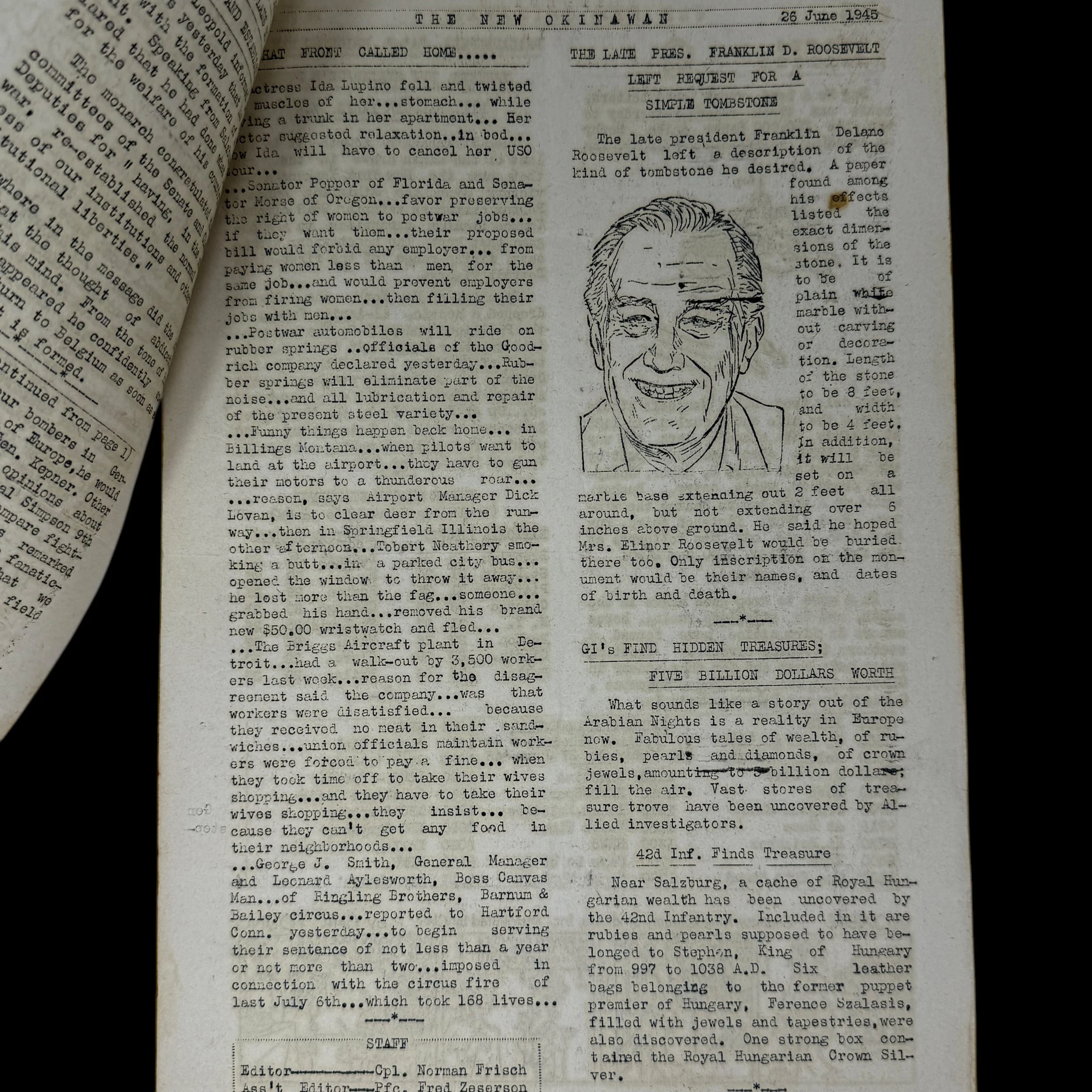
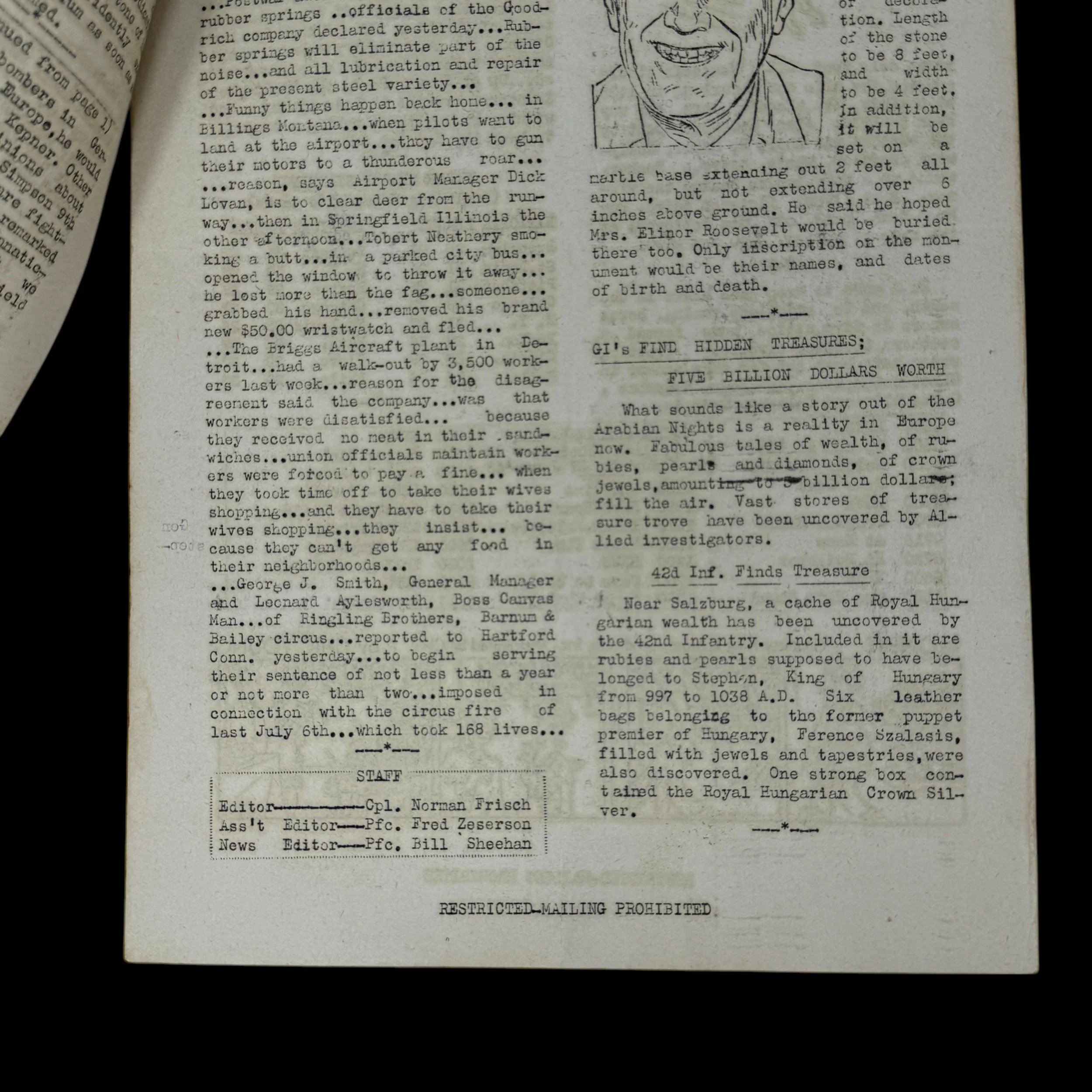

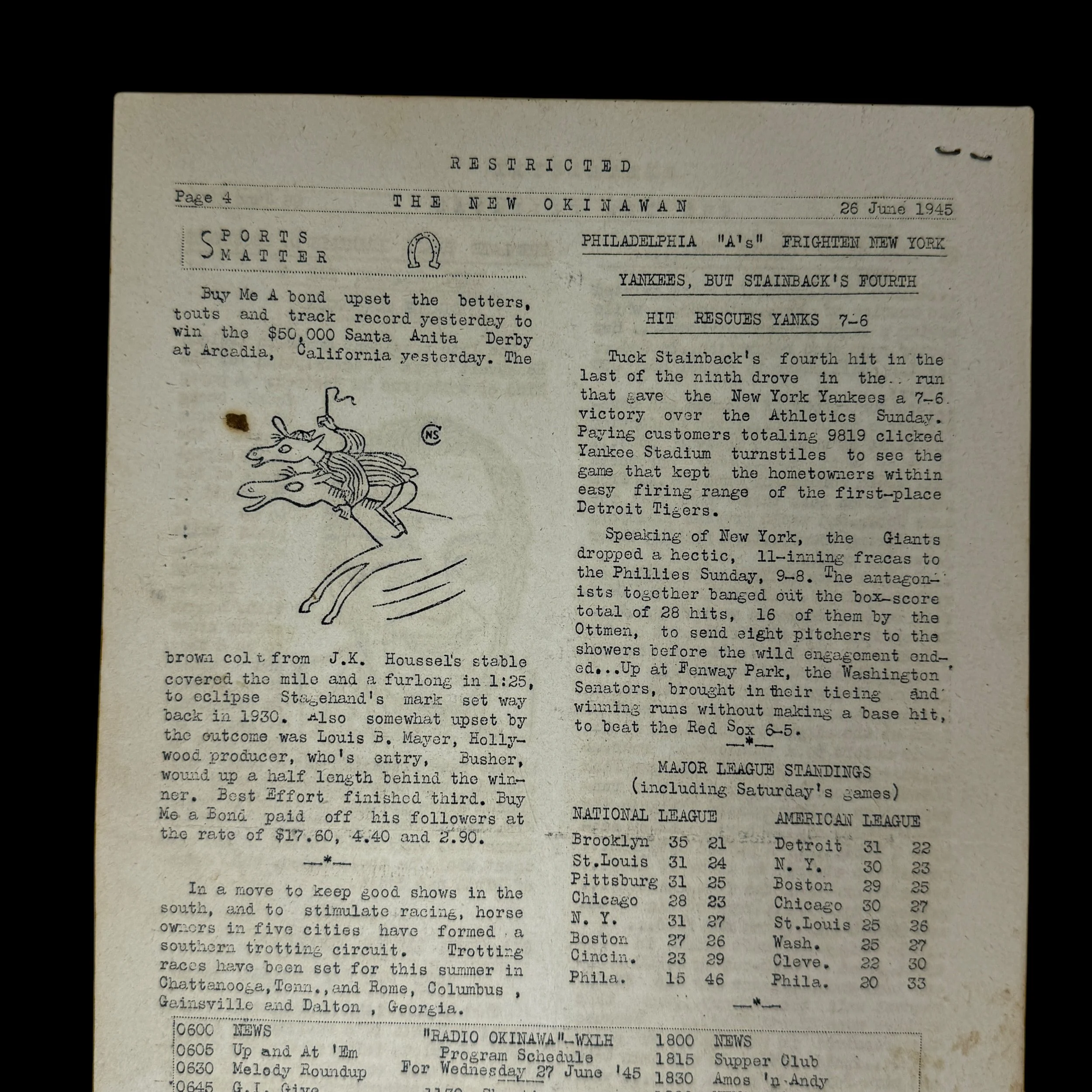
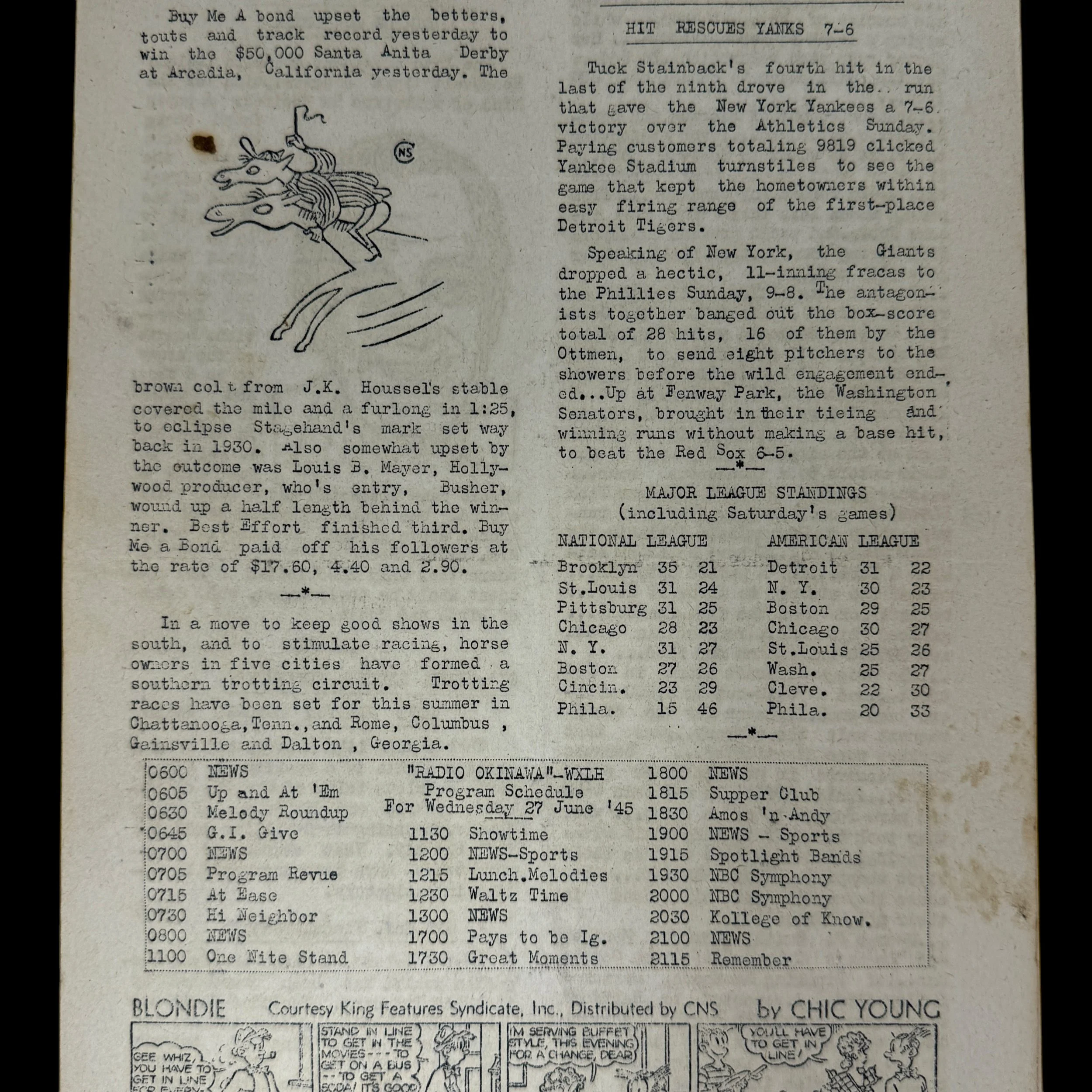
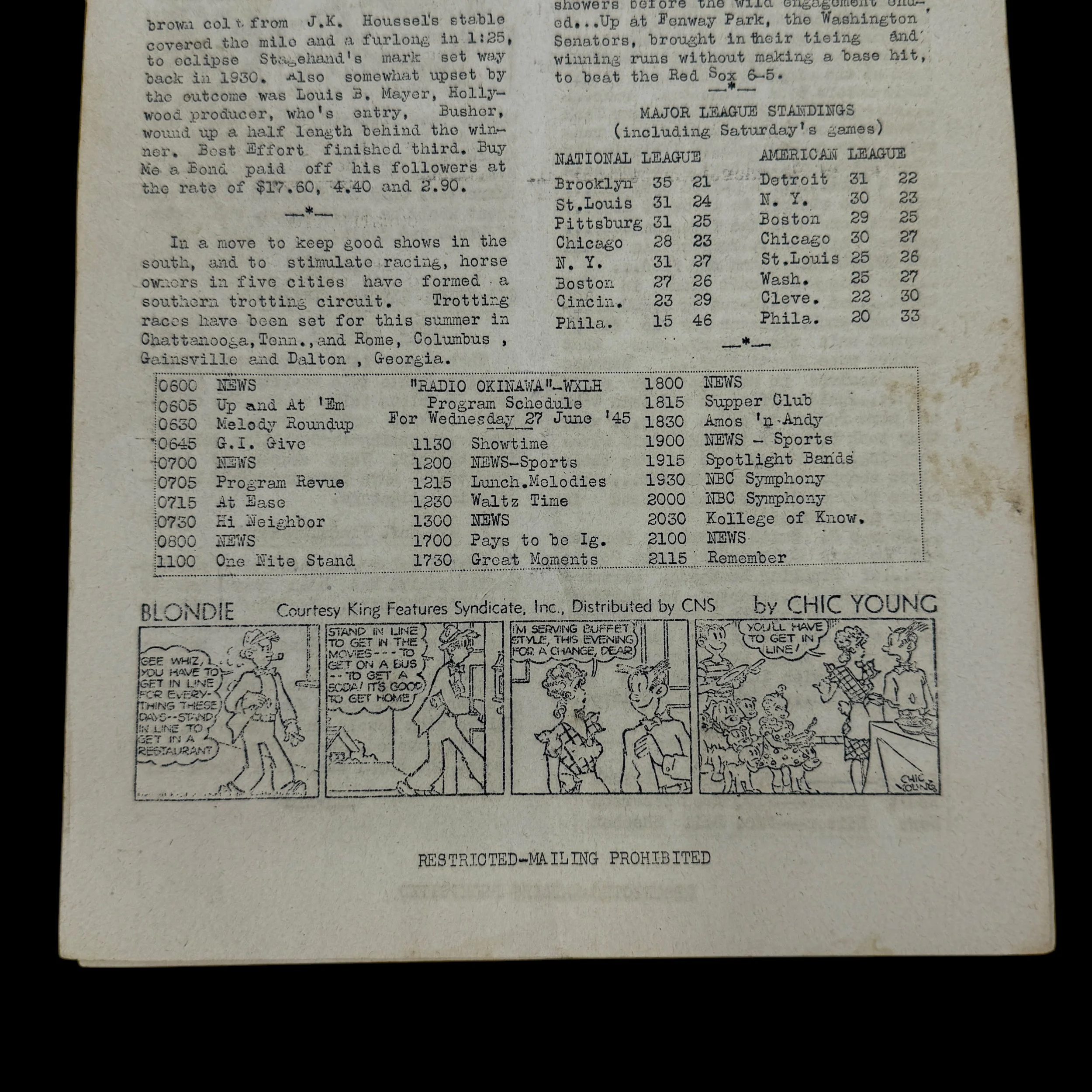
RARE! WWII June 26th, 1945 "The New Okinawan" U.S. Soldier Produced Battlefield-Printed U.S. Military Combat Press Newspaper
Comes with a hand-signed C.O.A.
*Proudly deemed "OKINAWA’S FIRST & ONLY WWII U.S. SOLDIER PRODUCED MILITARY COMBAT NEWSPAPER” this 1945-dated The New Okinawan is considered a highly sought-after relic of both journalistic and World War II military history. Due to the harsh conditions under which this battlefield “field-printed” newspaper were printed on Okinawa, few copies survived the war. Those that remain are held by high-end museums archives.
Size: 8 x 13 inches
Details: This report details a compelling glimpse into the state of the war in both the Pacific and European theaters. One of the most striking features of the paper is a powerful statement made by General Jacob L. Devers, commander of the Sixth Army Group and former Deputy Chief of Staff in the Mediterranean, in which he remarks on the formidable resistance of the Japanese forces, stating that in many ways, they were outfighting the Germans—a remarkable comparison given the recent Allied victory in Europe. The paper also reports on the continued Japanese air operations, highlighting the persistent threat posed by kamikaze missions and aircraft launched from the Japanese mainland targeting U.S. military positions and naval forces around Okinawa. In addition to updates from the Pacific, the newspaper provides coverage of the monumental surrender of Germany, officially marking the end of the war in Europe, and reflecting on the momentous efforts that led to victory there. Finally, the publication offers somber updates on the passing of President Franklin D. Roosevelt, who died just weeks earlier in April, with commentary on his leadership throughout the war and the transition of presidential responsibilities to Harry S. Truman. The newspaper captures a unique moment in history, marked by both the celebration of triumph in Europe and the sobering intensity of the ongoing struggle in the Pacific.
This exceptionally rare, museum-grade WWII artifact is an original 1945 "The New Okinawan” battlefield-printed newspaper. Dated June 26th, 1945, this unique soldier produced publication is a remarkable testament to the grit and resilience of the U.S. Army, Marines and military journalists stationed on Okinawa. It stands as a symbol of the determination to maintain communication and morale amidst one of the most brutal and pivotal battles of the Pacific Theater.
Publishing a newspaper in a battle zone was a near-impossible task. Equipment was scarce, paper supplies were limited, and the constant threat of enemy fire meant that the editorial team often had to move their operations to avoid danger. Yet, despite these overwhelming challenges, the dedicated soldiers, military journalists, and press corps on the island succeeded in producing The New Okinawan. This battlefield-printed newspaper was created, written, and distributed entirely on the island, making it an unprecedented and singular piece of WWII military press history.
While modest in appearance, the importance of The New Okinawan far exceeded its physical form. Produced on rudimentary printing presses, often under perilous conditions, the newspaper delivered vital news and updates to the soldiers stationed on the island. More than just a source of information, it became a lifeline, connecting the troops to the broader war effort and, crucially, to the world they had left behind. In an environment of chaos and uncertainty, the paper provided a sense of normalcy, giving the soldiers a brief respite from the horrors of battle while also keeping them updated on the war in the Pacific Theater.
In June of 1945, the island of Okinawa was the epicenter of one of the most brutal and decisive battles of the entire Pacific Theater, as American forces fought a grueling, monthslong campaign to seize control of the island from entrenched Japanese defenders. The Battle of Okinawa, which had begun on April 1, was reaching its blood-soaked climax. By early June, U.S. Army and Marine divisions were pushing into the southernmost portions of the island, encountering fierce resistance from Japanese troops dug into complex tunnel systems, fortified caves, and heavily defended ridgelines such as the infamous Shuri Line. The terrain, combined with torrential rains and the fanatical last-stand tactics of Japanese soldiers—including mass banzai charge attacks—turned each advance into a costly and exhausting endeavor. The Japanese commander, General Mitsuru Ushijima, refused to surrender, instead ordering his troops to fight to the death. Meanwhile, kamikaze attacks launched from Kyushu and other Japanese-held islands continued to hammer the American fleet off Okinawa’s coast, sinking or damaging over 30 U.S. ships during the campaign. The U.S. Navy suffered heavy losses, both from suicide attacks and the strain of nearly continuous combat operations, including round-the-clock air patrols and anti-aircraft defense. In the broader Pacific Theater, American strategic bombing of Japan intensified as B-29 Superfortresses launched firebombing raids on Japanese cities from airbases in the Mariana Islands, reducing much of urban Japan to ash and rubble. Submarine warfare also choked Japan’s shipping lanes, causing severe shortages of food and fuel. Plans for Operation Downfall—the impending invasion of the Japanese mainland—were accelerating, but military planners were deeply alarmed by the staggering casualty rates seen on Okinawa, raising fears that a mainland invasion would result in unprecedented Allied and Japanese deaths. By the end of June, American forces had nearly seized full control of Okinawa, but at a devastating cost: over 12,000 Americans killed and more than 49,000 wounded or missing, while an estimated 110,000 Japanese soldiers and tens of thousands of civilians had perished. The battle underscored the ferocity of Japanese resistance and marked a turning point that would heavily influence the decision to use atomic weapons later that summer.
The Battle of Okinawa, fought from April 1 to June 22, 1945, was the largest and bloodiest battle in the Pacific Theater of World War II. As the final major battle before a planned invasion of the Japanese home islands, Okinawa held immense strategic importance. U.S. Army and Marine Corps forces faced fierce resistance from deeply entrenched Japanese defenders, including fanatical kamikaze attacks targeting the U.S. Navy. The battle unfolded across rugged terrain, caves, and ridgelines, resulting in prolonged and brutal combat. American forces suffered over 49,000 casualties, including more than 12,000 killed, while Japanese military losses were even higher—alongside a devastating toll on Okinawan civilians. The ferocity and scale of the fighting shocked American planners and influenced the decision to use atomic weapons rather than invade Japan directly. In the aftermath, Okinawa became a critical staging area for Allied forces, and its capture effectively sealed Japan’s isolation, setting the stage for the final chapters of World War II.
Despite the cessation of active combat on the island, life on Okinawa after the battle was far from peaceful. The island remained a critical airbase, where U.S. forces continued operations until Japan’s surrender in September 1945. Soldiers stationed on Okinawa faced isolation, the ongoing threat of booby traps left by Japanese forces, and the psychological toll of having fought in one of the war’s bloodiest battles. Amid this atmosphere of uncertainty, the New Okinawan served as a vital outlet, providing news, updates, and, most importantly, a connection to the outside world.
The New Okinawan, though small and short-lived, was a symbol of resilience and hope for the soldiers who read it. The fact that it was printed at all, amidst the rubble of war, is a testament to the unyielding human spirit. The paper embodied the belief that even in the direst of circumstances, information and communication were essential for survival. It also underscored the military’s commitment to maintaining morale, even on the most remote and war-torn battlefields.
Today, the New Okinawan is considered a highly sought-after relic of both journalistic and military history. Due to the harsh conditions under which it was printed, few copies survived the war. Those that remain are held by museums, collectors, and archives as precious artifacts, offering a rare glimpse into the lives of the soldiers who fought on Okinawa. These newspapers are not only valuable for their historical context but also for the poignant story they tell—of soldiers seeking connection, comfort, and hope during one of the most harrowing experiences of World War II.
This original 1945 New Okinawan newspaper is a piece of history that continues to resonate, symbolizing the indomitable will of those who fought and served during the war. It stands as a rare, tangible link to the battlefield, a testament to the importance of communication, and a tribute to the extraordinary efforts of those who kept the spirit of humanity alive in the most difficult of times.